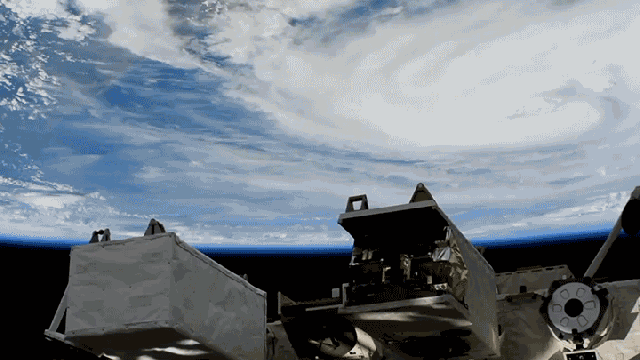As Hurricane Harvey barrels toward southwest Texas, astronauts on the International Space Station caught a glimpse of the monster cyclone from a safe viewing distance of 400km above the Earth. Honestly, you don’t want to get much closer.
The footage was captured on August 25 at 8:15AM AEST, as warm waters and favourable wind conditions were helping the storm gather strength over the Gulf. Harvey officially achieved hurricane status after a bout of rapid intensification yesterday that the National Hurricane Center described as “astounding”.
NASA astronaut Randy Bresnik also tweeted some photos of the storm taken from the ISS yesterday morning, with words of solidarity for Texans in its path.
God Bless Texas, may you weather the storm as you always have! pic.twitter.com/8qXHXc8YMY
— Randy Bresnik (@AstroKomrade) August 24, 2017
Meanwhile, NOAA’s Hurricane Hunters posted a harrowing time-lapse containing footage from a flight through the eye of the storm yesterday morning.
Timelapse of WP-3D Orion #NOAA42 flying a pass through the eye of #HurricaneHarvey from west to east. Advisories at https://t.co/3phpgKMZaS pic.twitter.com/b5lyqqkW9x
— NOAAHurricaneHunters (@NOAA_HurrHunter) August 24, 2017
Harvey is now centred 110km east-southeast of Corpus Christi, according to a recent update from the National Hurricane Center. While it isn’t predicted to make landfall until later today or early tomorrow morning, tropical storm conditions are expected to reach residents of the middle and upper Texas coast by later today. Harvey is expected to be a major (Category 3+) hurricane at landfall, which would make it the first major hurricane landfall in the US since Hurricane Wilma in 2005.
A prolific 38 to 63cm of rain is predicted top drop up and down the coast, with isolated accumulation totals of up to 89cm. The NHC warns of “life-threatening” coastal inundation from the storm surge, and urges residents to complete preparations to protect themselves and their property this morning. Widespread evacuation orders were issued along Texas’s Gulf Coast yesterday.
As if the threat to coastal residents wasn’t bad enough, Hurricane Harvey’s track could also bring it perilously close to the enormous petroleum refineries encircling Galveston Bay. As Emily Atkin writes in the New Republic, Harvey has the potential to become a major pollution disaster.
[NASA h/t Washington Post]
